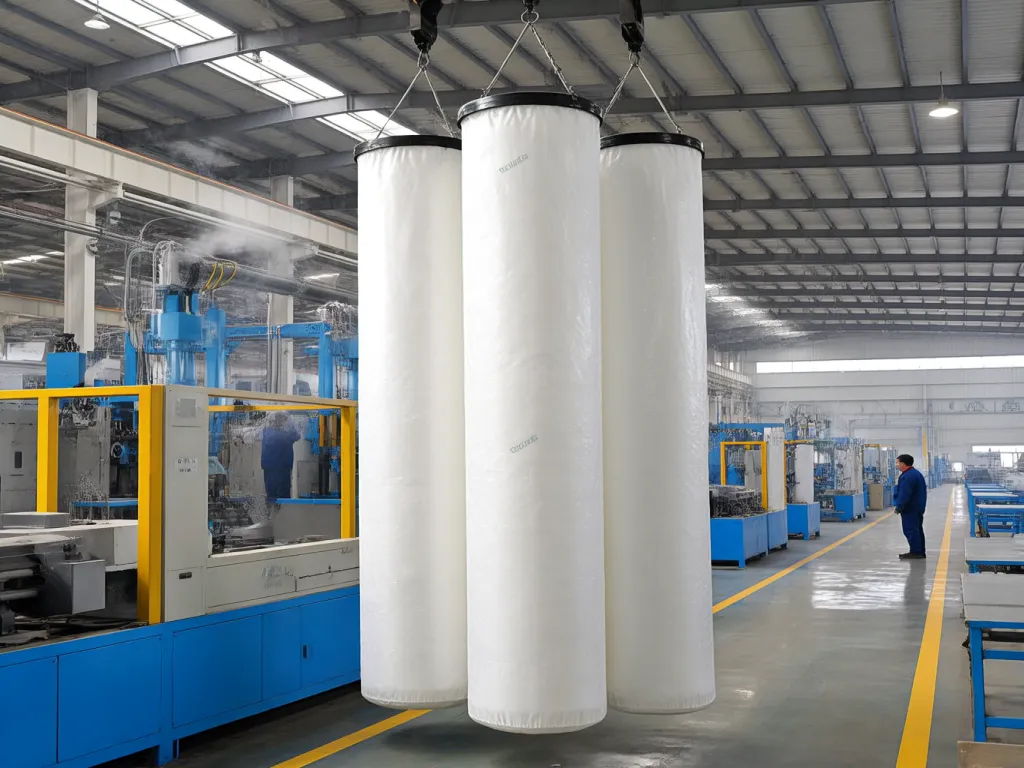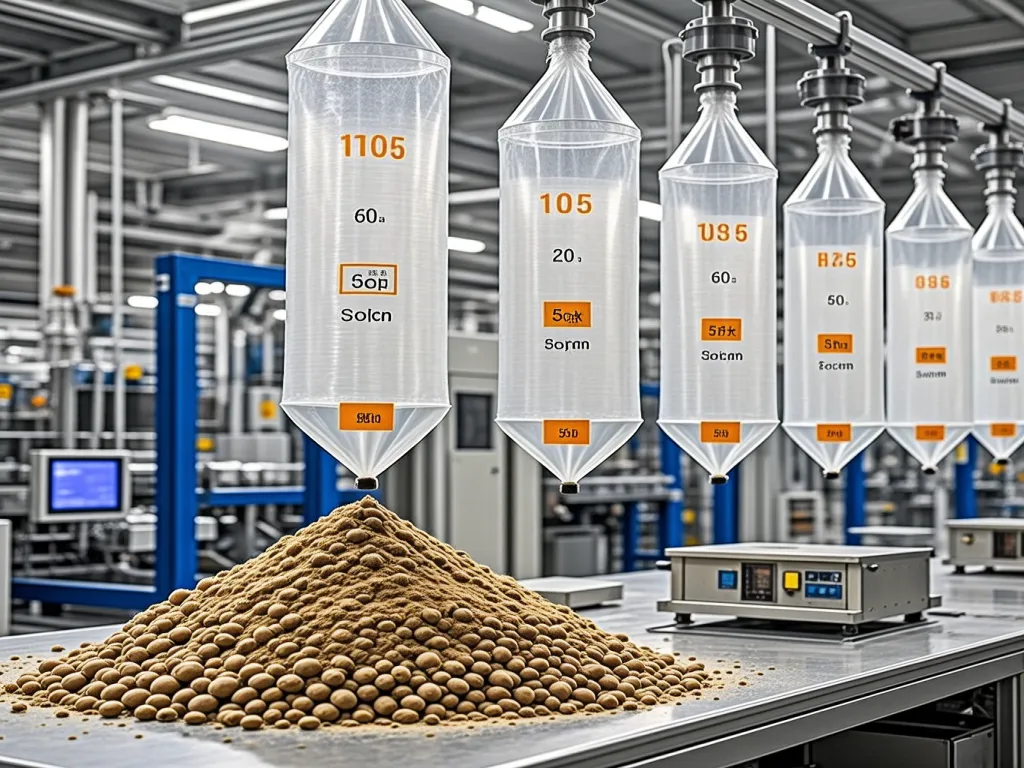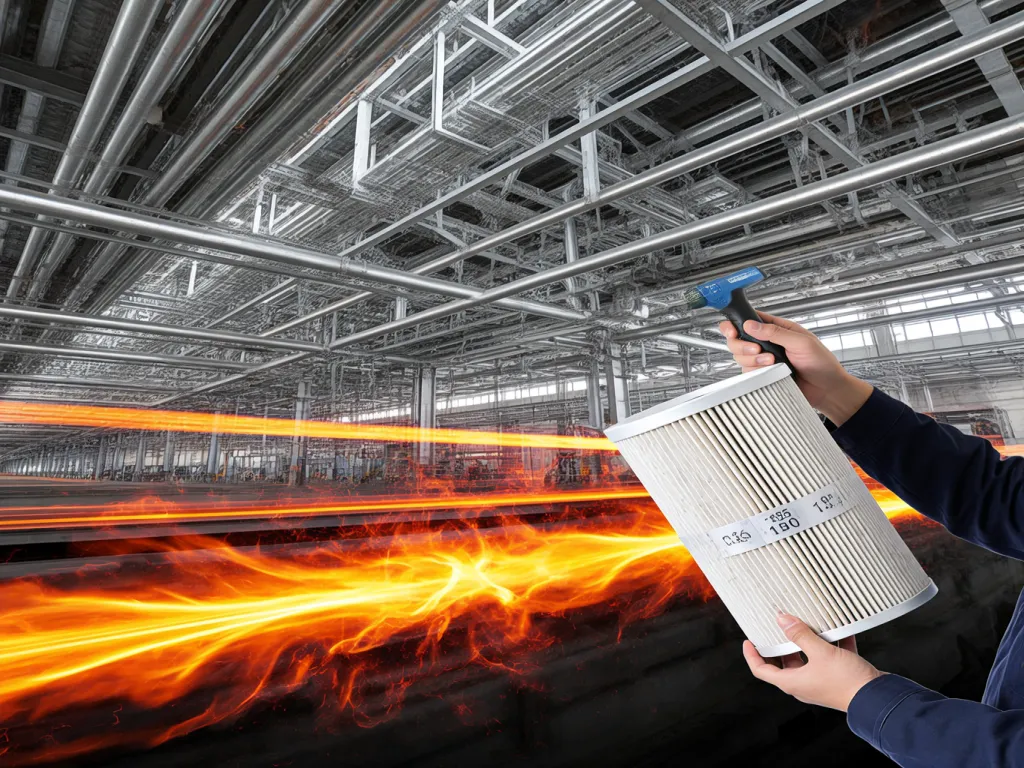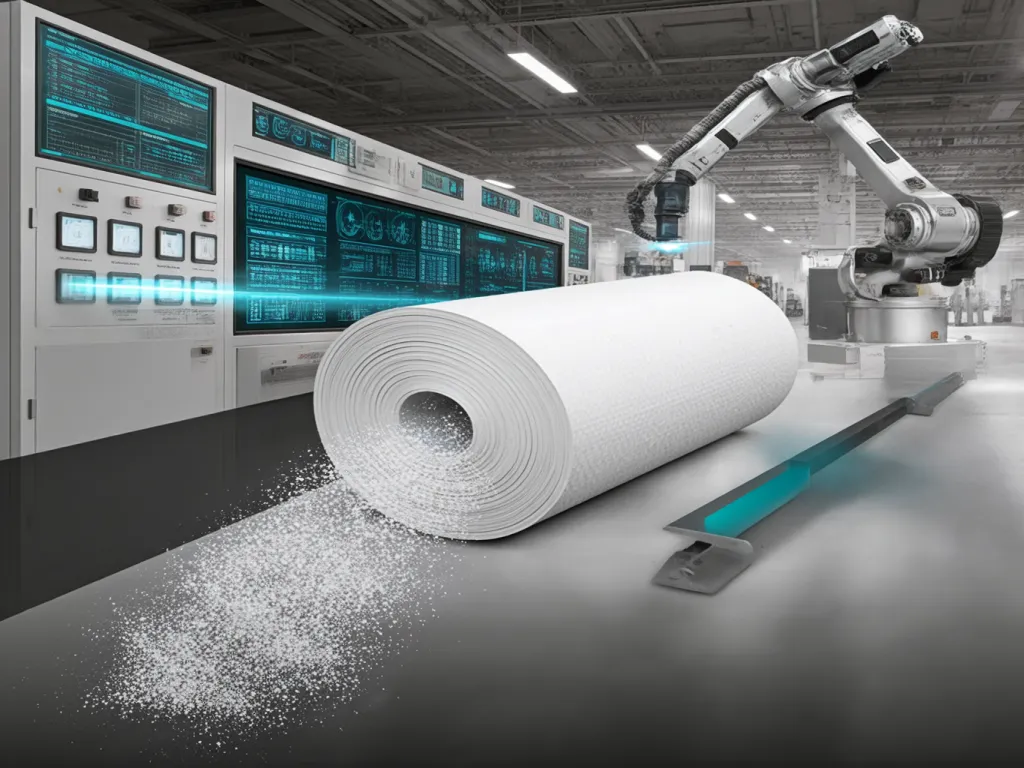Unlock Efficiency: Polyester Felt Filter Bag Guide

In the bustling world of industrial filtration, finding the right solution can be as crucial as the machinery itself. Enter the polyester felt filter bag for industrial use—a game-changer in the realm of efficient, reliable filtration. Whether you’re grappling with dust-laden air or handling fine particulates, choosing the perfect filter bag is key. But how do you navigate the myriad of options to find the one that fits your needs like a glove? Let’s dive into the nitty-gritty of selecting the ideal polyester felt filter bag for your industrial setup.

Filter Efficiency: Analyzing the Filtration Precision and Efficiency of Different Polyester Felt Filter Bags and Exploring How to Select the Right Filtration Level for Industrial Needs
When it comes to industrial filtration, the efficiency of polyester felt filter bags can’t be overstated. These bags are the unsung heroes of many industrial processes, quietly but effectively separating solids from liquids or gases. But how do you know which polyester felt filter bag is the right fit for your specific industrial needs? Let’s dive into the nitty – gritty of filtration precision and efficiency.
First off, filtration precision is all about the size of the particles a filter bag can capture. Polyester felt filter bags come in a range of filtration levels, typically measured in microns. A micron is one – millionth of a meter, so you can imagine how tiny these particles are. For example, a 1 – micron filter bag can catch particles that are just one – millionth of a meter in size. That’s incredibly small!
But why does this matter for your industrial use? Well, different industrial processes generate different sizes of particles. In a food processing plant, for instance, you might need to filter out very fine flour particles. A high – precision filter bag, say with a 5 – micron rating, would be ideal here. It ensures that only the cleanest product makes it through, meeting strict quality standards. For industrial applications requiring high-efficiency liquid filtration, consider exploring options like the polyester felt filter bag high-efficiency liquid filtration solution.
On the other hand, in a mining operation, the particles are often much larger. A 50 – micron or even a 100 – micron filter bag might be sufficient. Using a high – precision filter bag in this case would be overkill and could lead to clogging issues, reducing the overall efficiency of the filtration system.
Now, let’s talk about filtration efficiency. This is a measure of how effectively a filter bag can remove particles from the fluid or gas it’s filtering. A high – efficiency polyester felt filter bag for industrial use can remove a large percentage of particles in a single pass. For example, some high – quality bags can achieve an efficiency of over 99%. For high-efficiency dust and liquid filtration needs, you may want to check out the polyester felt filter bag for high-efficiency dust and liquid filtration.
But how do you determine the right filtration efficiency for your industrial needs? It depends on several factors. One of the most important is the end – use of the filtered product. If you’re producing pharmaceuticals, you need a filter bag with extremely high efficiency to ensure the purity of the final product. Even a small amount of contamination could be disastrous.
Another factor is the cost – benefit analysis. High – efficiency filter bags are often more expensive. You need to weigh the cost of using a high – efficiency bag against the potential losses from using a lower – efficiency one. For example, if a lower – efficiency bag leads to product contamination and subsequent recalls, the cost could far outweigh the savings on the filter bag itself.
So, how do you go about selecting the right polyester felt filter bag for your industrial needs? Start by understanding your specific filtration requirements. What size particles are you dealing with? What level of purity do you need in your final product? Once you have a clear picture of these requirements, you can start looking at the different filtration levels and efficiencies available.
Don’t be afraid to reach out to filter bag manufacturers or suppliers. They have a wealth of knowledge and can help you find the perfect fit. They can provide you with detailed specifications on different filter bags, including their filtration precision and efficiency ratings. You can also ask for samples to test in your own industrial setup. This hands – on approach can give you a real – world understanding of how the filter bag performs.
In conclusion, choosing the right polyester felt filter bag for industrial use is all about understanding your specific needs. By considering filtration precision and efficiency, along with other factors like cost and end – use, you can make an informed decision that will optimize your industrial filtration process. So, are you ready to take your industrial filtration to the next level?
Understanding Filtration Precision in Polyester Felt Filter Bags
Filtration precision is a fundamental aspect when it comes to polyester felt filter bags. As mentioned earlier, it’s measured in microns and indicates the smallest particle size a filter bag can capture. For industries dealing with extremely fine particles, such as semiconductor manufacturing, a high – precision filter bag is essential. These bags can trap particles as small as 0.5 microns or even less. In contrast, industries like construction material production, where the particles are relatively larger, a lower – precision filter bag with a 20 – micron or 50 – micron rating might be adequate. The key is to match the filtration precision of the bag to the particle size distribution in your industrial process. This ensures that you’re not only capturing the necessary particles but also avoiding unnecessary clogging, which can lead to increased downtime and maintenance costs.
The Significance of Filtration Efficiency in Industrial Settings
Filtration efficiency goes hand – in – hand with filtration precision. A high – efficiency filter bag can remove a large proportion of particles in a single pass. In industries like chemical processing, where the purity of the final product is critical, a filter bag with an efficiency of 99.9% or higher might be required. This level of efficiency ensures that any impurities are removed, preventing potential reactions or quality issues in the final product. However, achieving high filtration efficiency often comes at a cost. High – efficiency filter bags are usually made with finer fibers and more complex manufacturing processes, which can increase their price. But when you consider the long – term benefits, such as reduced product contamination and improved product quality, the investment can be well worth it. It’s all about finding the right balance between cost and performance for your specific industrial application.
Selecting the Right Polyester Felt Filter Bag: A Step – by – Step Guide
Selecting the right polyester felt filter bag for your industrial needs can seem like a daunting task, but it doesn’t have to be. Here’s a step – by – step guide to help you make the right choice. First, analyze your industrial process. Identify the types of particles you’re dealing with, their size distribution, and the flow rate of the fluid or gas you’re filtering. This information will give you a starting point for determining the filtration precision and efficiency you need. Next, consider the end – use of the filtered product. If it’s for human consumption or high – value industrial applications, you’ll likely need a high – efficiency filter bag. Then, factor in the cost. Compare the prices of different filter bags with varying precision and efficiency ratings. Don’t forget to consider the long – term costs, such as maintenance and replacement. Finally, consult with experts. Reach out to filter bag manufacturers or suppliers and get their recommendations. For specialized applications like water treatment, you might want to inquire about products like the polyester felt high-performance water treatment filter cloth. They can provide valuable insights based on their experience with similar industrial applications. By following these steps, you can confidently select the right polyester felt filter bag for your industrial needs.

Temperature Resistance: Analyzing the Stability of Polyester Felt Materials at Different Temperatures and Guiding the Selection of High-Temperature-Resistant Filter Bags for Industrial Use
When it comes to industrial filtration, the temperature resistance of polyester felt filter bags is a critical factor that can’t be overlooked. Imagine you’re running a factory where the working environment reaches scorching temperatures. If your filter bags can’t withstand the heat, you’ll end up with frequent replacements, increased downtime, and ultimately, higher operational costs. So, how do you ensure you’re choosing the right polyester felt filter bag for your specific temperature needs?
Polyester felt, as a material, exhibits varying degrees of stability across different temperature ranges. At lower temperatures, say around room temperature or slightly above, polyester felt maintains its structural integrity and filtration efficiency with ease. This makes it an excellent choice for environments where the temperature doesn’t fluctuate drastically.
However, as the temperature rises, things start to get interesting. Polyester felt begins to show signs of thermal degradation at higher temperatures. Typically, standard polyester felt filter bags can handle temperatures up to around 130°C (266°F) without significant loss in performance. But what if your industrial process operates at temperatures exceeding this threshold?
This is where the importance of selecting temperature-resistant polyester felt filter bags comes into play. Manufacturers have developed specialized polyester felt materials that can withstand much higher temperatures, often up to 180°C (356°F) or even more. These high-temperature-resistant variants are engineered with additional stabilizers and coatings that enhance their thermal stability, ensuring they maintain their shape and filtration efficiency even under extreme heat conditions.
But how do you know which temperature-resistant polyester felt filter bag is right for your application? The key lies in understanding your specific working environment. Start by measuring the maximum temperature your filtration system will be exposed to during operation. This includes considering any potential temperature spikes that might occur during peak production times or due to external factors like ambient temperature changes.
Once you have a clear idea of your temperature requirements, you can begin your search for the perfect filter bag. Look for products that explicitly state their temperature resistance ratings. Don’t be afraid to ask manufacturers for detailed specifications and test reports that back up their claims. After all, you’re investing in a solution that needs to perform reliably under pressure.
Another aspect to consider is the duration of exposure to high temperatures. Some industrial processes might subject the filter bags to brief but intense heat bursts, while others maintain a consistently high temperature throughout the operation. Understanding this will help you choose a filter bag that can handle not just the peak temperature but also the cumulative thermal stress over time.
Moreover, it’s worth noting that temperature resistance isn’t the only factor to consider when selecting a polyester felt filter bag. You also need to think about the chemical resistance of the material, especially if your industrial process involves exposure to corrosive substances. A filter bag that can withstand high temperatures but degrades quickly when exposed to certain chemicals won’t do you much good in the long run.
In conclusion, selecting a temperature-resistant polyester felt filter bag for industrial use requires a thorough understanding of your working environment’s temperature profile. By measuring the maximum temperature, considering the duration of exposure, and evaluating the chemical resistance of the material, you can make an informed decision that ensures optimal filtration performance and longevity. Remember, the right filter bag can save you time, money, and headaches down the line. So, take the time to do your research and choose wisely!
Understanding Temperature Thresholds
One of the first steps in selecting a temperature-resistant polyester felt filter bag is understanding the temperature thresholds of different materials. As mentioned earlier, standard polyester felt can typically handle temperatures up to 130°C (266°F). However, for applications that require higher temperature resistance, specialized materials are available. These materials are often labeled with their maximum operating temperature, making it easier for you to match them with your specific needs. It’s crucial to choose a filter bag that operates well below its maximum temperature rating to ensure a safety margin and prolong its lifespan.
Evaluating Thermal Stability Over Time
While the maximum temperature rating is important, it’s equally crucial to evaluate the thermal stability of the polyester felt material over time. Some materials might perform well in short-term high-temperature tests but degrade quickly when exposed to sustained heat. Look for materials that have undergone long-term thermal aging tests and have demonstrated consistent performance. This will give you confidence that your filter bag will maintain its filtration efficiency and structural integrity even under prolonged exposure to high temperatures.
Considering the Impact of Temperature on Filtration Efficiency
Temperature doesn’t just affect the structural integrity of the polyester felt material; it can also impact its filtration efficiency. As the temperature rises, the viscosity of the air or gas being filtered can change, affecting the flow rate and the ability of the filter bag to capture particles. Some high-temperature-resistant materials are designed to maintain their filtration efficiency even at elevated temperatures, ensuring consistent performance across a wide temperature range. When selecting a filter bag, consider how temperature changes might affect your specific filtration requirements and choose a material that can adapt accordingly.

Breathability: Exploring Its Impact on Filtration Efficiency and Equipment Energy Consumption, and How to Balance It with Filtration Efficiency for Optimal Performance
When it comes to polyester felt filter bags for industrial use, breathability isn’t just a buzzword—it’s a critical factor that can make or break your filtration system’s efficiency and energy consumption. So, what exactly is breathability in the context of filter bags? Simply put, it’s the ability of the filter material to allow air (or gas) to pass through it while effectively capturing particulate matter. Now, you might be thinking, ‘Why does breathability matter so much?’ Well, let’s dive into the nitty-gritty. First off, breathability directly affects filtration efficiency. Imagine a filter bag that’s so dense it barely lets any air through. Sure, it might capture a lot of particles, but the pressure drop across the filter will be high, forcing your equipment to work harder to push air through. This not only reduces the overall flow rate but also increases energy consumption, leading to higher operational costs. On the flip side, a filter bag with too much breathability might not capture enough particles, compromising the quality of your filtered product or environment. So, how do you strike the perfect balance? It all starts with understanding your specific industrial needs. Are you filtering fine dust particles in a cement plant, or are you dealing with larger debris in a woodworking facility? The nature of the particulate matter will dictate the required filtration efficiency, which in turn influences the optimal breathability of your filter bags. For tailored solutions, consider exploring our high-efficiency polyester felt filter bags. Another crucial aspect to consider is the air-to-cloth ratio. This ratio determines how much air can pass through a given area of filter material. A higher air-to-cloth ratio means more breathability but potentially lower filtration efficiency if not matched correctly with the particulate size and concentration. Conversely, a lower ratio enhances filtration efficiency at the cost of increased pressure drop and energy consumption. Let’s not forget about the impact of breathability on equipment longevity. Filters that are too restrictive can cause excessive wear and tear on fans and blowers, leading to frequent maintenance and replacements. On the other hand, filters that are too breathable might not provide adequate protection, causing contaminants to bypass the filter and damage downstream equipment. So, what’s the sweet spot? It varies from application to application, but generally, you want a filter bag that offers enough breathability to maintain a reasonable pressure drop while capturing the required percentage of particulate matter. This balance ensures that your filtration system operates efficiently, with minimal energy consumption and maximum equipment lifespan. In practice, achieving this balance often involves testing and iteration. Start by selecting a filter bag with a breathability rating that aligns with your initial estimates. Then, monitor the pressure drop, filtration efficiency, and energy consumption over time. If you notice that the pressure drop is too high, consider switching to a more breathable filter bag. Conversely, if you’re not capturing enough particles, a less breathable option might be necessary. Remember, the goal is to find the filter bag that offers the best compromise between breathability and filtration efficiency for your specific industrial use. By doing so, you’ll not only optimize your filtration system’s performance but also reduce operational costs and extend the lifespan of your equipment. Isn’t that a win-win situation?
The Science Behind Breathability
Breathability in polyester felt filter bags is largely determined by the fiber structure and density. Polyester fibers can be woven or needle-punched to create different levels of porosity. Woven fabrics tend to have lower breathability due to their tighter weave, while needle-punched felts offer higher breathability with their looser, more open structure. The choice between woven and needle-punched depends on your filtration needs. For applications requiring high filtration efficiency with fine particles, a woven fabric might be preferable despite its lower breathability. However, for coarser particles or applications where energy efficiency is paramount, a needle-punched felt could be the better choice. For more information on high-temperature-resistant filtration solutions, explore our non-woven polyester felt options.
Real-World Implications of Breathability
Let’s look at a real-world example. A steel manufacturing plant was experiencing high energy costs due to excessive pressure drop across their filter bags. After analyzing their system, they switched to a more breathable polyester felt filter bag. The result? A 20% reduction in energy consumption while maintaining the same level of filtration efficiency. This not only saved them money but also extended the lifespan of their filtration equipment. On the flip side, a food processing plant that switched to a highly breathable filter bag without considering their particulate size ended up with contaminated product. They had to revert to a less breathable option, highlighting the importance of balancing breathability with filtration needs.
Future Trends in Breathability
As technology advances, we’re seeing innovations in polyester felt filter bags that offer even better breathability without compromising filtration efficiency. Nanofiber coatings, for example, can enhance particle capture while maintaining high airflow. Additionally, smart filter bags with embedded sensors are on the horizon, allowing for real-time monitoring of pressure drop and filtration efficiency. These advancements will make it easier than ever to find the perfect balance between breathability and filtration performance, ensuring optimal operation for industrial facilities worldwide.
As we’ve explored, the polyester felt filter bag for industrial use isn’t just another piece of equipment; it’s a cornerstone of efficient, cost-effective filtration. By understanding the nuances of filtering efficiency, temperature resistance, and breathability, you’re now equipped to make an informed choice that boosts your industrial operations. Remember, the right filter bag doesn’t just capture particles—it optimizes your entire filtration system. So, why wait? Elevate your industrial filtration game today and see the difference a well-chosen polyester felt filter bag can make. Curious about more advanced filtration techniques? The journey to peak efficiency is just beginning.

